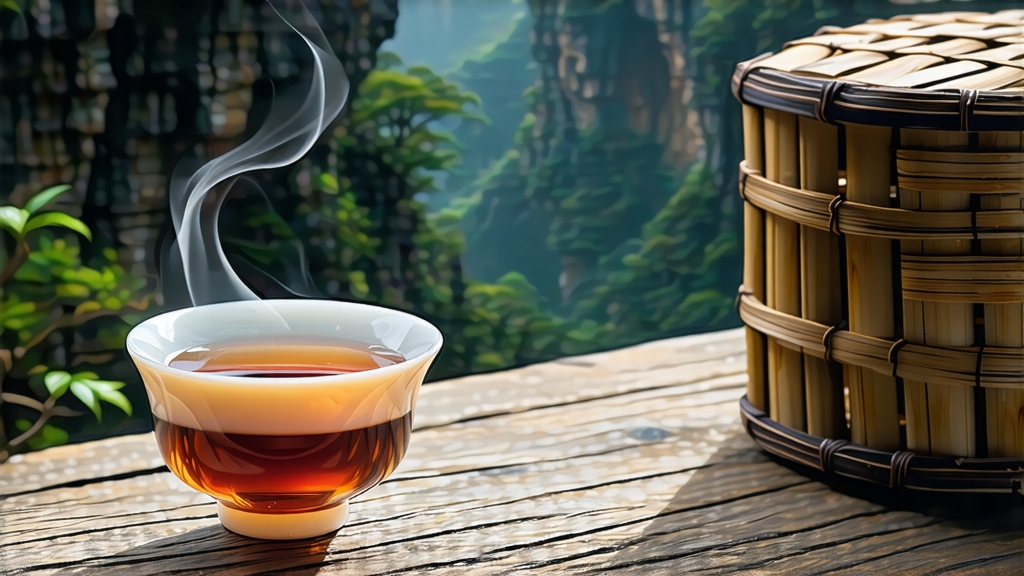
Long before Assam, Ceylon or Darjeeling entered the lexicon of tea lovers, a small village in the Wuyi Mountains of northern Fujian province had already mastered the art of fully oxidised leaf. That village is Tongmu Guan, and the tea born there in the mid-seventeenth century is Lapsang Souchong—today celebrated as the world’s first black tea. To local farmers it is still “zhengshan xiaozhong”, literally “small-leaf variety from the original mountain”, a name that quietly insists on terroir and authenticity. International traders corrupted “xiaozhong” into “souchong”, and the tea sailed out of Xiamen port labelled “Lapsang”—Fuzhou dialect for “pine village”—thus fixing an exotic moniker that still conjures images of smoky mystery in the minds of drinkers from London to Los Angeles.
History: Fire, War and a Duchess’s Parlour
The commonly accepted story begins around 1646, when Qing armies swept through Fujian. Retreating Ming soldiers camped among the tea factories of Tongmu, commandeering the sheds and delaying the usual green-tea schedule. By the time farmers regained control, the leaves had wilted and reddened beyond rescue for green-tea standards. In desperation they dried the crop quickly over fresh pine fires so it would travel without spoiling. The Dutch, already active in Amoy (modern Xiamen), bought the entire lot, shipped it to Europe, and found that the assertive, tarry aroma delighted northern European palates. Catherine of Braganza is said to have made it fashionable in the English court after her 1662 marriage to Charles II, sealing Lapsang’s fate as the prototypical “bohea” that would dominate Atlantic trade for the next two centuries. By the 1840s Tongmu produced barely 5 000 kg a year; most of it went to Russia via camel caravans on the Siberian route, while lesser, unsmoked versions were re-roasted in Canton for British blenders who needed a cheaper base for “English Breakfast”. The twentieth century brought warlords, Japanese occupation and the collapse of imperial demand, and the craft almost vanished. Revival began in 2002 when the Chinese government granted Tongmu Guan “Original Place” protection, limiting the name “Zhengshan Xiaozhong” to leaf grown inside a 50 km² core zone and processed with traditional pinewood. Today fewer than 300 households are licensed to make true Lapsang Souchong, and every kilo is tracked with QR codes from forest to cup.
Micro-Terroir: Why Only These Rocks and This Mist Will Do
The Wuyi range is a UNESCO geopark of vertical cliffs, humid ravines and weathered igneous soils so poor that locals joke “even the weeds grow slowly”. At 600–1 200 m elevation, morning fog diffuses sunlight into a soft, silver glow that forces tea bushes to synthesise more theanine and fewer bitter catechins. The indigenous cultivar is “cai cha”, a mixed population of small-leaf Camellia sinensis var. sinensis that seeds itself among the rhododendrons and bamboo. Because the slopes are too steep for tractors, every leaf is still hand-picked into wicker baskets strapped to the backs of pickers who descend rope ladders at dawn. The same cliffs that limit mechanisation also block cold north winds, creating a pocket of subtropical humidity where pine and cedar have grown for millennia. It is this resinous wood, not the leaf itself, that gives Lapsang its signature perfume.
Two Styles: Traditional Smoke vs. Modern “Unsmoked” Fruit
Purists divide Lapsang into two camps. The classic, export-grade “Song Zhong” (pine-style) is withered over open pinewood fires, pan-fired, rolled, then smoked again in wooden chambers called “qinglou” where bamboo trays are stacked seven stories high above a gentle hearth of embers. The smoke must be cool (28–32 °C) and fragrant; too hot and the leaf turns acrid, too weak and the aroma fades within weeks. Master smokers judge readiness by biting a stem—it should snap clean, releasing a whiff of incense reminiscent of frankincense and longan. The finished tea is glossy black with golden tips,